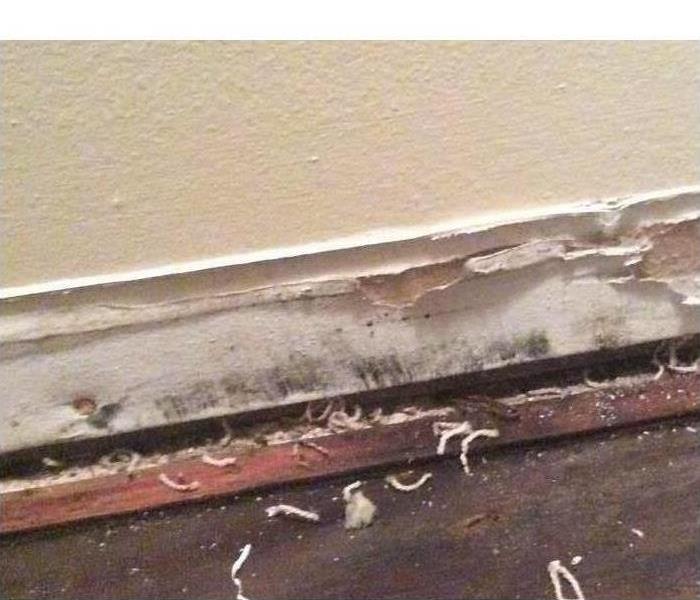Preventing Mold From Growing in Your Facility
5/14/2022 (Permalink)
Mold spores exist in almost every environment, even in conditions not suitable for mold growth. However, once they find a source of moisture, it doesn't take long for them to take root in your Seneca, MO, facility. Rather than dealing with it after the fact, it's best to learn about mold prevention.
How Does Mold Grow?
Mold growth happens with just a few conditions:
- Food (surfaces containing cellulose, like wood or ceiling tile)
- A temperature between about 40 and 100 degrees Fahrenheit
- Oxygen
- Moisture
If the first three conditions are present in your facility, it's easy to see that spores can find a suitable environment once moisture is introduced.
Common Sources of Moisture in Buildings
Mold prevention means finding the most common sources of moisture in your facility.
You may find water in your HVAC system drain pans. Drains can become corroded or plugged with dirt, causing them to overflow into ducts and surrounding areas.
Ceiling tiles are porous and can absorb moisture from a roof leak. Tiles are usually made of cellulose-containing materials that feed mold. Moisture can collect in tiles around vents and pipes, areas susceptible to dirt and water leaks.
Like ceiling tiles, carpet and drywall are porous surfaces that absorb moisture. If you have water damage, a commercial building restoration service can help you dry and replace materials as needed.
Paper left in humid or damp places can provide a food source for mold. Take care to store paper reams or files in places with low humidity. Avoid storing boxes of paper on a basement or concrete floors. Moisture can travel through masonry and leave behind mold on its surface.
Watch for mold on electrical equipment, cable and fixtures. Warm, moist air can travel through gaps around outlets on exterior walls and ceiling-mounted light fixtures. If an electrical conduit has been flooded, moisture can remain inside.
Keeping an eye on areas in your building that are susceptible to moisture is the key to mold prevention. A little maintenance can prevent damage in the long run.




 24/7 Emergency Service
24/7 Emergency Service
